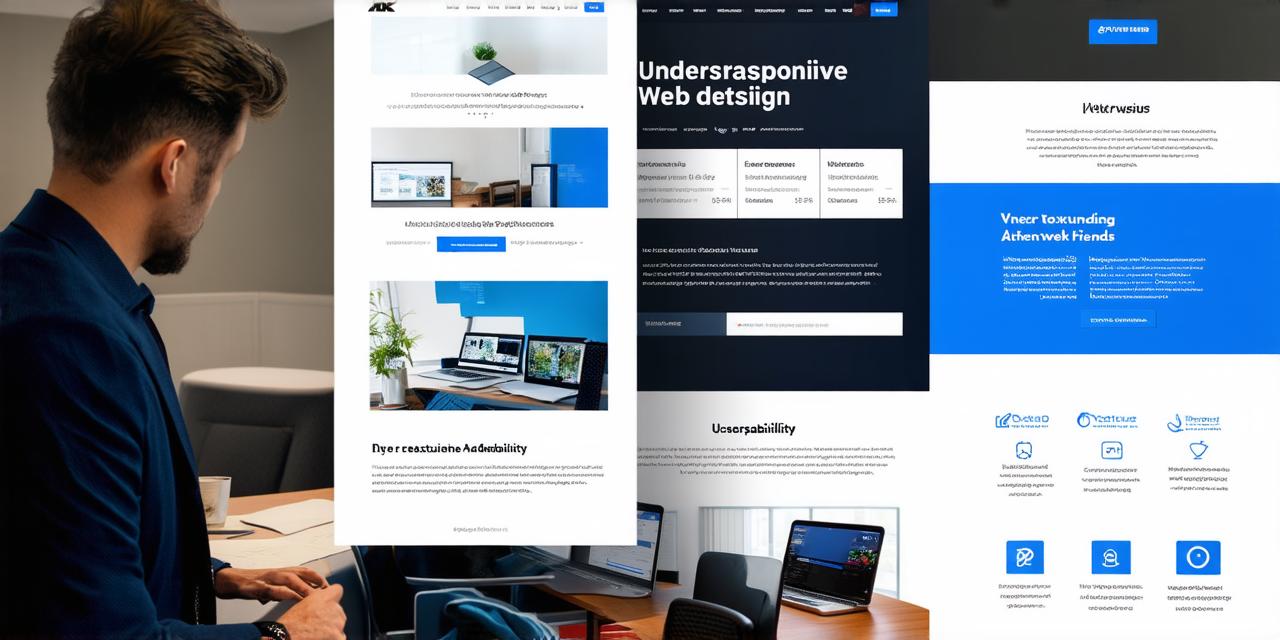Understanding the Importance of Responsive Web Design
BlogIn today’s digital age, having a website is no longer an option but a necessity. However, with so many websites available on the internet, standing out can be challenging. One way to achieve this is by implementing responsive web design (RWD), which focuses on creating a seamless user experience across multiple devices and screen sizes. In this article, we will discuss the importance of RWD for SEO and user experience, and provide some real-life examples and case studies to illustrate its impact.
The Importance of Responsive Web Design for Search Engine Optimization (SEO)
According to Google’s algorithm update in 2015, mobile-friendliness became a ranking factor for SEO. This means that websites that are not optimized for mobile devices will rank lower in search results on mobile devices. The reason behind this is simple: more and more people are accessing the internet via their smartphones and tablets, and Google wants to provide users with the best possible experience.
RWD allows website owners to create a single website that can adapt to different screen sizes and devices, providing a consistent user experience across all platforms. This not only improves the user experience but also helps improve SEO by ensuring that your website is mobile-friendly and easily accessible to a wider audience.
Case Studies: How Responsive Web Design Improved SEO
1. The New York Times – Before implementing RWD, The New York Times had separate websites for desktop and mobile users. However, this created a fragmented user experience and made it difficult for users to navigate between the two platforms. After implementing RWD, The New York Times saw an increase in traffic from mobile devices, as well as an improvement in search engine rankings.
2. McDonald’s – Before implementing RWD, McDonald’s had a separate website for its UK and Irish customers. This created confusion for users who were trying to access the same information on both websites. After implementing RWD, McDonald’s saw a significant increase in mobile traffic and improved search engine rankings across both platforms.
3. Zappos – Before implementing RWD, Zappos had a separate website for its desktop and mobile users. This created a disjointed user experience and made it difficult for users to find the information they were looking for. After implementing RWD, Zappos saw an increase in mobile traffic and improved search engine rankings across both platforms.
The Importance of Responsive Web Design for User Experience
While RWD is important for SEO, it is equally important for user experience (UX). With the increasing use of mobile devices, users expect a seamless experience across all platforms. Websites that are not optimized for mobile devices can be frustrating to use and may result in users leaving the site. This can have a negative impact on conversion rates and overall user engagement.
RWD allows website owners to create a single website that is accessible and easy to navigate across all platforms. By providing a consistent user experience, RWD can improve user engagement and satisfaction, leading to increased loyalty and repeat business.
Case Studies: How Responsive Web Design Improved User Experience
1. Starbucks – Before implementing RWD, Starbucks had separate websites for its desktop and mobile users. This created a disjointed user experience and made it difficult for users to find the information they were looking for. After implementing RWD, Starbucks saw an increase in mobile traffic and improved user engagement across both platforms.
2. Airbnb – Before implementing RWD, Airbnb had separate websites for its desktop and mobile users. This created a disjointed user experience and made it difficult for users to find the information they were looking for. After implementing RWD, Airbnb saw an increase in mobile traffic and improved user engagement across both platforms.
3. Amazon – Before implementing RWD, Amazon had separate websites for its desktop and mobile users. This created a disjointed user experience and made it difficult for users to find the information they were looking for. After implementing RWD, Amazon saw an increase in mobile traffic and improved user engagement across both platforms.
Best Practices for Implementing Responsive Web Design
While RWD is important, it’s not a one-time task. It requires ongoing maintenance and updates to ensure that your website remains accessible and easy to use across all platforms. Here are some best practices for implementing RWD:
- Use a responsive design framework – There are many responsive design frameworks available, such as Bootstrap and Foundation.
